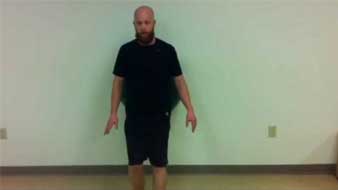We can all agree that humans are two-legged creatures. How often though, besides standing, are we actually on two legs while upright? Walking is a single leg activity.. Running is a single leg exercise.. Kicking a ball is a single leg skill.. So if you think about it, we spend a lot of our time with all, or the majority of our weight, on one leg.
These mindless activities come natural and seem effortless, but in truth, the body works hard to keep you upright when on one foot is suspended during the swing phase of locomotion. The muscles in the core and lower extremity must be strong in order for you to complete these simple tasks, and will be tested even further when attempting higher level activities, such as skiing.
While skiing the slopes, we transfer from one leg to the other on a regular basis in order to push off, carve between trees and snowboarders, or turn into a stop. This requires advanced single leg strength and balance. Similar to any other activity, we must train our bodies in preparation for the requirements to be placed upon them. We walk and run to keep our muscles strong for everyday life, so what can we do to strengthen our legs and core for the slopes?
A great exercise to test and further develop single leg strength and balance is the single leg squat, or pistol squat.
WHY DO PISTOL SQUATS?
Symmetry: Often, imbalances are seen between the right and left sides of the body. Whatever the cause, working one side individually will help to eradicate this problem, giving strength and symmetry to your body.
Simplicity: The pistol squat, and all the progressions leading up to it, are body weight exercises that require no equipment, and can be done at home. You are already paying for a season pass, so why pay for a gym membership too?!
Efficiency: Pistol squats, being a single leg exercise, simultaneously train strength and balance. Add in the benefit of improving mobility, and you have a 3-in-1 exercise that beats all others when it comes to training for the slopes!
The final product is not a beginner exercise, and much is required before you should attempt it. Please follow the progressions and make sure you can complete each step before performing the pistol squat. Once you are able to complete three sets of 12-15 repetitions without assistance or compensation, move on to the next progression.

